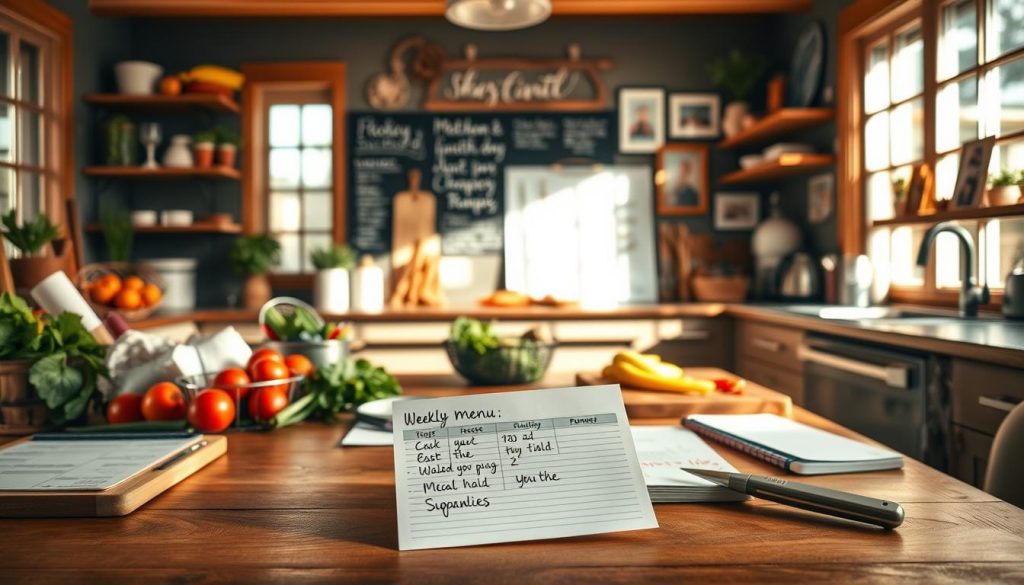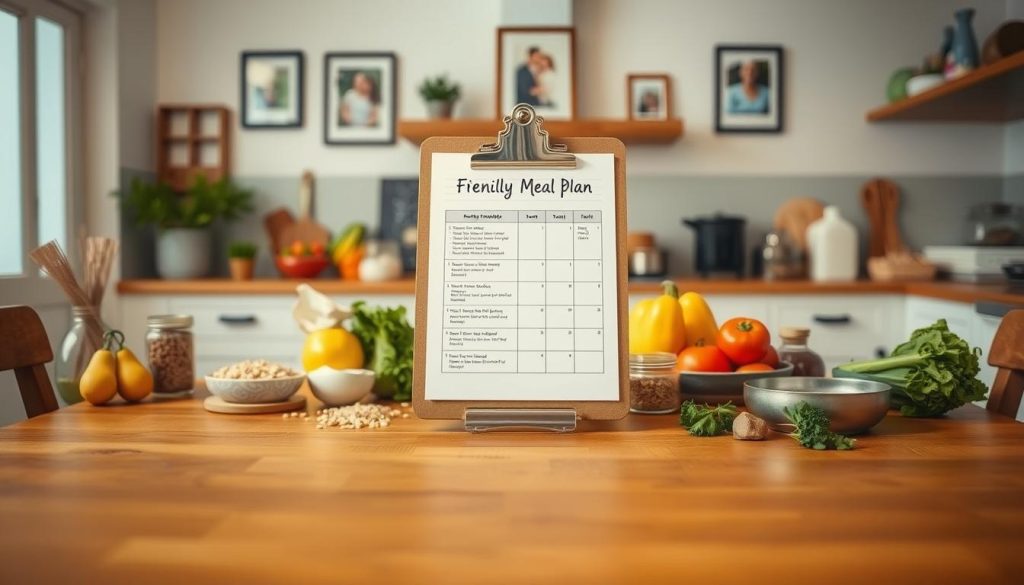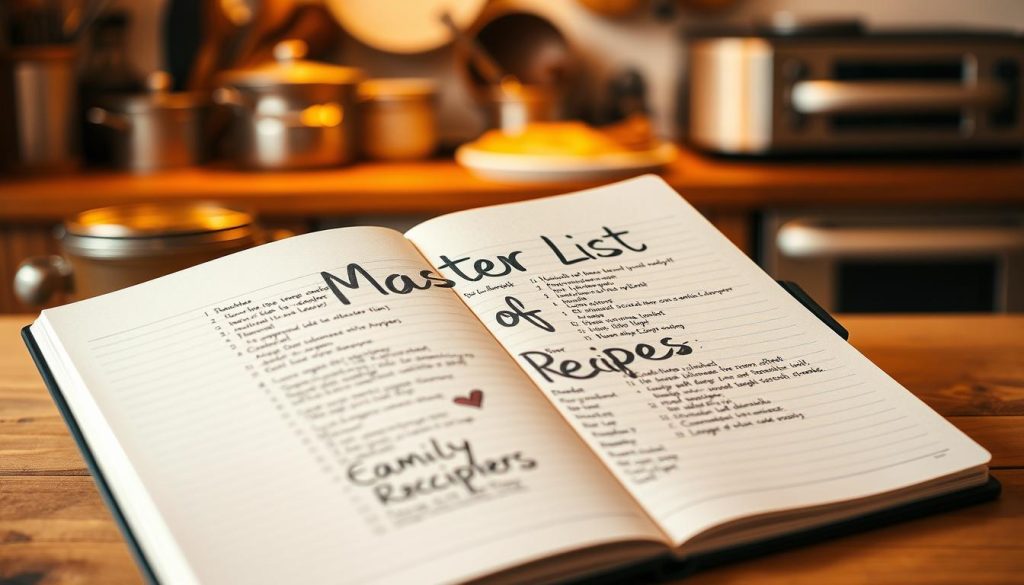Mom Meal Planning: Streamline Dinner Time with These Tips
Busy families often find themselves scrambling to put dinner on the table. With so much to juggle, it’s easy to fall into the trap of relying on fast food or last-minute takeout. But what if there was a way to make evenings smoother and healthier? That’s where meal planning comes in.
By taking a little time to plan your week, you can save both time and stress. A well-thought-out meal plan ensures you have all the ingredients on hand, reduces trips to the store, and helps you avoid the dreaded “what’s for dinner?” question. Plus, it’s a great way to involve the whole family in choosing recipes and ideas.

Planning ahead doesn’t mean you’re locked into a rigid schedule. Flexibility is key. Having backup meals or quick recipes ready can be a lifesaver on hectic days. And the benefits go beyond convenience—home-cooked meals are often healthier and more budget-friendly than eating out.
To make things even easier, we’ve included a printable weekly worksheet to help you get started. Whether you’re a seasoned planner or just starting out, these tips will simplify your routine and make dinner time something to look forward to.
Key Takeaways
- Meal planning saves time and reduces stress during busy weeks.
- Having a flexible schedule allows for backup meals on hectic days.
- Home-cooked meals are healthier and more cost-effective than fast food.
- Involving the family in choosing recipes can make planning more fun.
- A printable weekly worksheet can help streamline the process.
Introduction to Easy and Flexible Meal Planning
Dinner time doesn’t have to be a daily battle with the clock. With a little preparation, you can turn chaotic evenings into smooth, enjoyable moments. Flexible meal planning is the key to achieving this balance. It’s not about rigid schedules but creating a system that works for your family and lifestyle.
Setting the Stage for Stress-Free Dinners
Planning ahead ensures you’re always one step ahead of the game. Instead of scrambling to decide what’s for dinner, you’ll have a clear idea for each day of the week. This approach eliminates the stress of last-minute decisions and helps you stay in control of your ingredients and recipes.
For example, themed nights like “Taco Tuesday” or “Pasta Night” can make planning fun and predictable. Having backup meals on hand, like freezer-friendly dishes or quick recipes, ensures you’re prepared for even the busiest days.
The Benefits of Planning Ahead
There are countless advantages to creating a meal plan. Here are just a few:
- Save time: No more daily debates about what to cook.
- Reduce decision fatigue: A clear plan means fewer last-minute choices.
- Stay organized: A well-thought-out list keeps your shopping trips efficient.
- Healthier meals: Home-cooked dinners are often more nutritious than takeout.
By taking a proactive approach, you’ll not only simplify your routine but also create more opportunities to enjoy quality time with your family. Let’s dive into practical tips to make this process even easier.
Why Home Cooking Matters for Busy Families
Cooking at home offers more than just nourishment—it’s a way to connect and thrive. For busy families, it’s a step toward healthier habits and stronger bonds. By prioritizing homemade meals, you can create a routine that benefits everyone.
Health Benefits and Family Wellbeing
Home-cooked meals are packed with nutrients that fast food often lacks. Fresh ingredients mean fewer preservatives and more vitamins. This leads to better energy levels and overall health for your family.
Preparing meals together can also strengthen relationships. It’s a chance to share ideas, try new recipes, and enjoy quality time. Plus, kids who help in the kitchen are more likely to develop healthy eating habits.
Avoiding the Pitfalls of Fast Food
Fast food may seem convenient, but it often comes with hidden costs. High levels of sodium, sugar, and unhealthy fats can impact your family’s health. Over time, these choices can lead to chronic issues like obesity or heart disease.
With a solid plan, you can avoid these pitfalls. Simple recipes and a well-stocked pantry make it easy to whip up a meal in minutes. Plus, you’ll save money and reduce waste by cooking at home.
| Home Cooking | Fast Food |
|---|---|
| Fresh, nutrient-rich ingredients | High in sodium and unhealthy fats |
| Cost-effective and budget-friendly | Expensive over time |
| Encourages family bonding | Often eaten on the go |
By making home cooking a priority, you’re investing in your family’s health and happiness. It’s a small change that can make a big difference in your daily life.
Essential Tips for Mom Meal Planning
Finding balance in your weekly routine can transform how you approach dinner time. By aligning your meal plan with your family’s true schedule, you can create a system that works for everyone. Let’s explore practical strategies to make this process seamless and stress-free.
Understanding Your Weekly Schedule
Start by mapping out your family’s commitments for the week. This includes work, school, extracurricular activities, and any other events. Knowing your busiest days helps you decide when to prepare quick meals or rely on freezer-friendly dishes.
For example, if Wednesday evenings are packed, plan a simple recipe or use pre-prepped ingredients. This approach saves time and reduces last-minute stress. A well-organized list of meals ensures you’re always prepared, even on hectic days.
Making Room for Flexibility in Your Plan
Flexibility is the cornerstone of successful meal planning. While themed nights like “Taco Tuesday” can be fun, they shouldn’t feel rigid. If your family craves variety, mix in new ideas alongside favorite recipes.
Keep backup meals on hand for unexpected changes. A stocked pantry with versatile ingredients allows you to whip up a quick dish in minutes. This ensures you’re never caught off guard.
Here are some actionable tips to incorporate flexibility:
- Set aside 15 minutes each week to review and adjust your plan.
- Involve your family in choosing meals to keep everyone engaged.
- Experiment with new recipes but always have a few tried-and-true options ready.
By creating a system that adapts to your needs, you’ll make meal planning a sustainable and enjoyable part of your routine. Remember, the goal is to simplify your life, not add more stress.
Creating a Family-Friendly Meal Plan
Creating a meal plan that everyone loves doesn’t have to be complicated. The key is to find a balance between crowd-pleasing favorites and exciting new ideas. By involving your family in the process, you can ensure that everyone looks forward to dinner time.

Selecting Crowd-Pleasing Recipes
Start by building a master list of recipes your family already enjoys. Dishes like pasta, pizza, and chicken are often safe bets. Rotating these favorites ensures consistency while keeping things interesting.
Here’s a simple way to organize your list:
- Include at least 3-4 tried-and-true recipes each week.
- Add one new recipe to introduce variety.
- Keep versatile ingredients on hand for quick adjustments.
Balancing New Ideas with Favorites
Introducing new recipes can be fun, but it’s important to do it gradually. Start with one new dish per week and gather feedback from your family. This approach minimizes the risk of wasted meals and keeps everyone engaged.
“Variety is the spice of life, and it’s no different in meal planning. A mix of old and new keeps things exciting.”
| Favorite Recipes | New Recipes |
|---|---|
| Spaghetti and Meatballs | Thai Chicken Curry |
| Homemade Pizza | Vegetable Stir-Fry |
| Grilled Chicken | Quinoa Salad |
By following these steps, you’ll create a meal plan that’s both practical and enjoyable. Remember, the goal is to simplify your routine while keeping dinner time something to look forward to.
Designing a Go-With-the-Flow Meal Schedule
Life can be unpredictable, but your dinner schedule doesn’t have to be. A go-with-the-flow meal plan is all about adapting to changes without stress. Whether it’s a last-minute meeting or an unexpected event, having a flexible approach ensures you’re always prepared.
Adapting to Last-Minute Changes
When your week doesn’t go as planned, your meals can still stay on track. Start by having a few contingency recipes ready. These are quick, fuss-free dishes that require minimal prep time. For example, if you planned a slow-cooked stew but ran out of time, switch to a 20-minute stir-fry instead.
Another helpful tip is to shift meals around. If Tuesday’s recipe doesn’t work, move it to Thursday. This keeps your overall meal plan intact while accommodating changes. Flexibility is key, especially on days with unpredictable schedules.
Here are some practical ways to stay adaptable:
- Keep a list of quick recipes for busy nights.
- Stock your kitchen with versatile ingredients like pasta, rice, and frozen veggies.
- Plan fewer structured meals on days when your schedule is hectic.
By building adaptability into your plan, you’ll reduce stress and make dinner time more enjoyable. Remember, the goal is to simplify your routine, not add more pressure.
Building a Master List of Recipes and Backup Meals
Having a reliable collection of recipes can make weeknight dinners a breeze. A master list is your secret weapon for stress-free cooking. It’s a curated selection of dishes your family loves, combined with quick fixes for those busy days.

Maintaining Your “Go-To” List
Start by compiling a list of tried-and-true recipes. Include favorites like pasta dishes, stir-fries, and casseroles. This ensures you always have options that everyone enjoys. Keep this list updated by adding new recipes after testing them.
Organize your master list digitally or on paper. A digital version can be easily updated and shared with your family. A written copy is handy for quick reference in the kitchen.
Planning for Quick Fixes and Leftovers
Life gets busy, and that’s where backup meals come in. Keep ingredients like shredded chicken, frozen veggies, and pre-made sauces on hand. These can be turned into quick meals like tacos or fried rice in minutes.
Leftovers are another time-saver. Plan meals that can be repurposed creatively. For example, roast chicken one night can become chicken salad the next day. This reduces waste and saves time.
Here are some tips to make the most of your master list:
- Include at least 3-4 quick-fix recipes for hectic days.
- Rotate meals to keep things interesting for your family.
- Use leftovers to create new dishes, like turning roasted veggies into a soup.
By building and maintaining a master list, you’ll simplify your routine and make dinner time something to look forward to.
Stocking Your Kitchen and Pantry for Meal Prep Success
A well-stocked kitchen is the foundation of stress-free cooking. Having the right ingredients and tools on hand makes it easier to whip up a meal, even on the busiest days. Whether you’re a seasoned cook or just starting out, a well-organized pantry and kitchen setup can save you time and effort.
Must-Have Ingredients and Staples
Start by stocking your pantry with versatile essentials. These are items you’ll use in a variety of recipes, making them invaluable for quick meals. Here’s a list of must-haves:
- Chicken or beef broth: Perfect for soups, stews, and sauces.
- Canned tomatoes: A base for pasta sauces, chili, and more.
- Olive oil: Ideal for cooking, dressings, and marinades.
- Rice and pasta: Quick, filling sides for any dinner.
- Spices and herbs: Add flavor to any dish without extra effort.
These staples ensure you’re always ready to create a meal, even when your fridge is running low.
Essential Kitchen Tools for Efficient Cooking
Having the right tools can make a world of difference in your cooking experience. Here are some essentials every kitchen should have:
- Chef’s knife: A sharp, versatile knife for chopping and slicing.
- Dutch oven: Great for slow-cooking soups, stews, and roasts.
- Sheet pan: Perfect for roasting veggies or baking a quick recipe.
- Cutting board: A durable surface for prepping ingredients.
- Mixing bowls: Essential for combining ingredients efficiently.
Investing in quality tools can save you time and make cooking more enjoyable.
Organizing your pantry is another key step. Group similar items together, like grains, canned goods, and spices. This makes it easier to find what you need when you’re in a hurry. Balancing quality staples with budget-friendly options ensures you’re prepared without overspending.
By focusing on these essentials, you’ll create a kitchen setup that supports your family’s needs. A well-stocked pantry and the right tools are the first steps toward successful meal prep.
Streamlining Grocery Shopping and Organization
Efficient grocery shopping starts with a solid plan and a well-organized list. By keeping track of what you need and what you already have, you can save time, reduce stress, and stay within your budget. A little preparation goes a long way in making your weekly routine smoother.
Creating a Running Grocery List
A running grocery list is a game-changer for busy families. Instead of scrambling to remember what’s missing, jot down items as you run out. This ensures you never forget essentials like spices, canned goods, or fresh produce.
Keep your list in a visible spot, like on the fridge or in a shared app. This way, everyone in the family can add items as needed. A well-maintained list keeps your pantry stocked and your shopping trips efficient.
Shopping Smart: Utilizing Sales and Stocked Items
Smart shopping means making the most of sales and what you already have. Before heading to the store, check your pantry and cross-reference your list. This prevents duplicate purchases and helps you stick to your budget.
Plan your meals around weekly sales to save money. For example, if chicken is on sale, add a chicken-based recipe to your meal plan. This approach not only cuts costs but also adds variety to your dinner rotation.
Here are some tips to make your shopping trips even smarter:
- Shop during off-peak hours to avoid crowds and save time.
- Stick to your list to reduce impulse buys.
- Use a printed checklist to stay organized and focused.
By following these strategies, you’ll streamline your grocery routine and make meal planning a breeze. Organized shopping not only saves money but also ensures you’re always prepared for the week ahead.
Expert Strategies for Turning Meal Planning into a Habit
Turning meal planning into a habit doesn’t have to feel overwhelming. By starting small and focusing on consistency, you can create a routine that works for your family and lifestyle. The key is to take it one step at a time and build confidence along the way.
Starting Slow and Easing Into a Routine
Begin by planning just a few meals for the week. This approach reduces pressure and allows you to focus on quality over quantity. For example, start with three dinners and gradually add more as you get comfortable. A printable weekly meal planner can help you stay organized and track your progress.
Consistency is more important than perfection. Even if you miss a day or two, don’t give up. Over time, these small efforts will add up, making meal planning a natural part of your routine.
Learning Basic Cooking Terminology and Techniques
Understanding common cooking terms can make recipes less intimidating. Words like “sauté,” “simmer,” and “dice” are essential for following instructions confidently. Start with simple dishes that use these techniques, like a stir-fry or soup.
Here are a few tips to build your cooking skills:
- Watch online tutorials to see techniques in action.
- Practice one new method each week to expand your repertoire.
- Keep a list of your favorite recipes for quick reference.
By taking a gradual approach, you’ll reduce overwhelm and increase your confidence in the kitchen. Remember, every great cook started with the basics.
Wrapping it up!
Transforming your dinner routine into a stress-free experience is easier than you think. By adopting a flexible meal plan, you can save time, reduce stress, and enjoy healthier, home-cooked meals. This approach not only supports your family’s wellbeing but also helps you stay within budget.
A well-stocked kitchen and a solid master list of recipes are key to success. These tools ensure you’re always prepared, even on the busiest nights. Starting small and gradually building a routine can make a big difference in your daily life.
Ready to get started? Download our free meal planning worksheet and begin experimenting with these strategies. With consistent effort, every dinner can become a delightful experience, bringing your family closer together and reducing daily stress.







